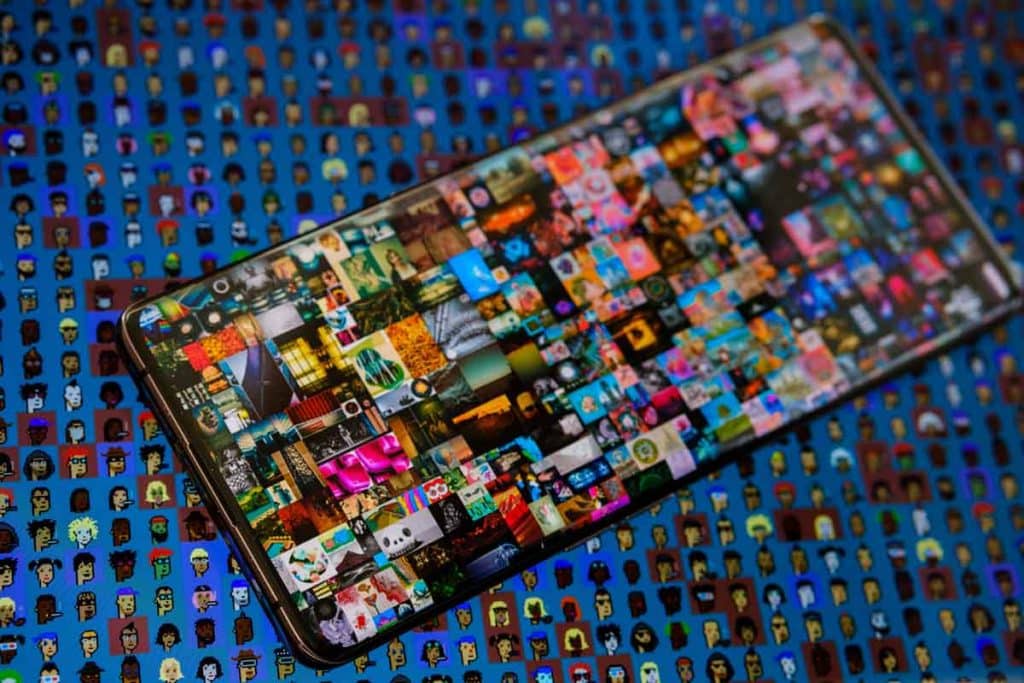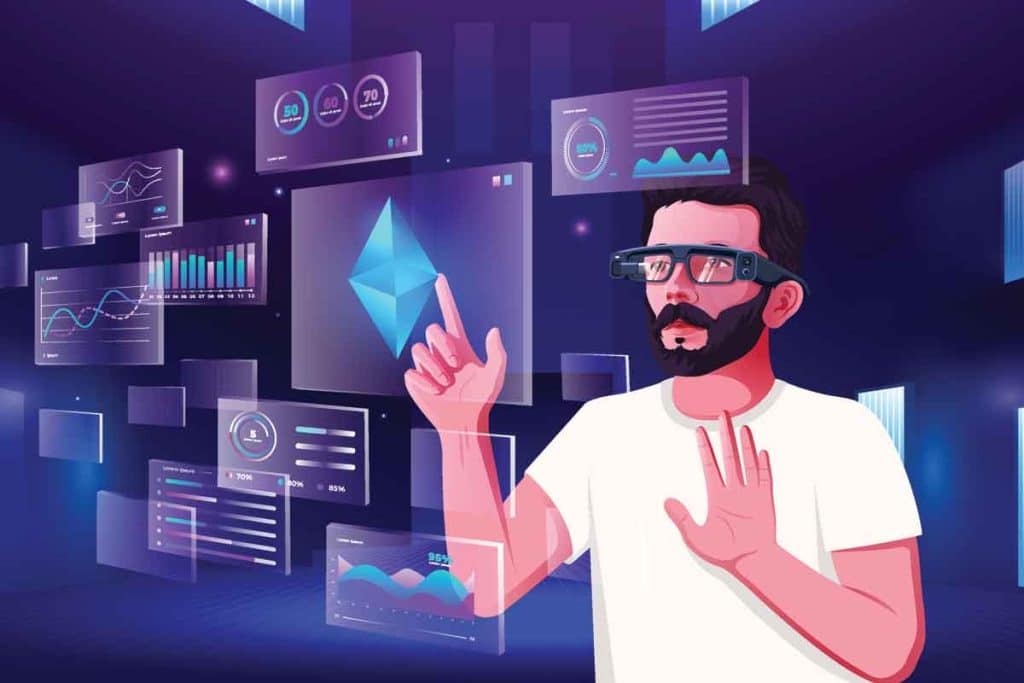At their peak in early 2022, non-fungible tokens (NFTs), became a worldwide phenomenon promoted as the future of digital ownership and collectibles, with some selling for millions of dollars. But only months later, the once lucrative NFT market experienced a dramatic crash, leaving many early investors with major losses.
As the fallout continued into 2023, industry experts are carefully examining whether NFTs truly fulfill their investment potential, or if the initial hype masked deeper issues.
Despite the digital collectible market’s sharp decline, visitors to NFT marketplaces in the UAE remained impressively high through mid-2023 at over four million, suggesting retained interest in the region, according to Nicola Buonanno, VP of Southern EMEA at blockchain analytics firm Chainalysis.
“This retained interest in NFTs in the UAE offers businesses the opportunity to grow past the hype and start to introduce practical use cases based on this technology,” she said.
Yet the volatility of last year begs the question – were NFTs ever really a good investment?
“NFTs in 2023 have had a wild rise, to say the least,” said Josh Jones, co-founder of Cornucopias, an up-and-coming blockchain-based video game. Following the collapse of the world’s second-largest crypto exchange, FTX, in late 2022, Web 3 investors, blockchain and NFTs started the year with “lower confidence.” As a result, NFTs have garnered a negative sentiment, with many deeming it a “dead trend,” he said.

But he added that “as more people choose to develop NFTs with utility, providing unique experiences for each player, interest and adoption will continue growing.” Developers like Cornucopias highlight alternative applications that could stabilise the market, adding that recent weeks have seen a resurgence in interest for digital collectibles.
Between October 29 and November 5, NFT sales surged 18 percent compared do the previous week to $106.32 million.
Bashir Kazour, Managing Director of digital asset firm Taurus, concurred that NFTs have strong potential in “digital product passports for high-value items,” facilitating circular economies by enabling repair and resale of luxury goods.
“It is a digital twin of a physical good,” he explained. The token represents the product’s certificate of ownership and would contain its lifecycle events information such as date of production and repairs made.
“This acts as a foundational layer for brands to build their own second-hand markets for luxury items, as an extension of their existing e-commerce activities.”
The early NFT market surge
The tokenized asset market, which first emerged in 2017, experienced a major surge in popularity in early 2021, with trading volumes reaching $13 billion. This was driven in part by the popularity of NFTs in the art world, with digital artists like Beeple and Pak selling their work for millions of dollars.
Some of the most famous early NFT projects that gained widespread interest included CryptoPunks and Bored Ape Yacht Club. CryptoPunks, created in 2017, was one of the first collections consisting of 10,000 unique pixel art characters. Individual pieces from this collection exchanged hands for millions. Bored Ape Yacht Club, minted in 2021, is a set of 20,000 cartoon ape images that became very popular among online influencers and celebrities. Digital collectibles from this collection have also reached million dollar sales prices.
Another notable early success was NBA Top Shot. This platform allows people to buy and trade video clips from NBA games as NFTs. It was one of the first major projects to gain attention beyond the crypto community, with some individual NFTs selling for millions.
The NFT market saw tremendous growth in early 2022, with monthly sales volumes on marketplace OpenSea hitting over $5 billion in January 2022. This was a huge increase from just $95 million in July 2021, according to analytics firm DappRadar. However, much of this growth was driven by speculative buying and selling rather than real use cases.
However, the market crash began during the second quarter of 2022, most finance experts believe. Around 79 percent of all NFT collections remained unsold as of September 2023, and the supply surplus and little demand created a buyer’s market this has been more cautious and less enthusiastic, a study by dappGambl shows.
Most collections have little value today. Around 95 percent of the 73,257 NFT collections the researchers looked at had a market cap of zero ether at the time of the study. Estimates show that almost 23 million people hold these assets that are now worthless.

Risks and opportunities for NFT regulation
While speculative bubbles badly stung early investors, experts argue quality use cases may stabilise prices long-term.
“Ownership representation for non-digital goods – that is, a digital representation of ownership on chain for physical goods – seems likely,” offering redress against theft by providing transparency into legitimate owners, Buonanno said.
The volatility primarily impacted hype-driven collections, the experts said, real utility could lay the groundwork for more lasting value – only if risks around fraud and market manipulation can be mitigated.
Nonetheless, risks still persist that give investors pause. Buonanno cautioned market manipulation remains “a fair concern” for collectible NFTs incentivised by rewards tokens.
“When there are no rewards, and the attacker must pay a gas fee, the attack often does not prove profitable,” she added. Fraud, hacks and money laundering also marred the early days of this market. And as with any disruptive technology, without clear regulation, uncertainty loomed large.
Gauging the early hype cycle, Cornucopias co-founder Rob Greig argued that NFTs have surged on hype alone likely won’t regain past interest. This aligns with Chainalysis data showing global interest declining from its peak.

However, experts contend focusing on practical applications that move NFTs from speculation into true investment.
“It is important to keep in mind that NFT is a medium and encompasses several categories: art, collectibles, gaming, or identity for example. Some of Taurus’ banking clients in Switzerland offer custody services for high-end digital art NFTs, which demonstrated strong price resiliency as opposed to other categories which followed a speculative pattern similar to several cryptocurrencies: boom and bust,” said Kazour.
If strong use cases take hold, NFTs may stabilise, he explained. As both Cornucopias and Taurus work to implement real utility through new ventures with banks and brands, the future appears bright for thoughtfully developed concepts, the experts agreed.
Buonanno predicts more mainstream uses like “ownership representation of physical goods on-chain” and “access tokens for services,” aligning with Kazour and Cornucopias’ visions. And while bubbles come and go with emerging technologies, history shows disruptors transforming entire industries when fundamental utility emerges. If the architectural potential of NFTs inspires widespread useful applications, mainstream adoption may follow, transforming early ‘investments’ into genuine valuable assets, the experts said.
“NFTs are smart contracts – which are lines of codes – and will continue to evolve and improve over the next couple of years,” said Kazour. “It is critical for technology providers in the space to remain future-proof. This means being blockchain and smart contract agnostic and process any type of smart contracts.”










